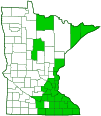jumpseed
(Persicaria virginiana)
Conservation • Wetland • Description • Habitat • Ecology • Use • Distribution • Taxonomy
Description |
Jumpseed is a 20″ to 40″ tall, erect, perennial forb that rises from a rhizome. It often forms clumps. The stems are erect, ribbed, and either branched above the middle or unbranched. They do not have prickles. The lower stem is hairless or almost hairless. The upper stem is covered with, straight, stiff, appressed, downward-pointing hairs. The leaves are alternate, 2″ to 6¾″ long, and ¾″ to 4″ wide. Lower leaves are on ⅜″ to ¾″ long leaf stalks, upper leaves are nearly stalkless. The leaf stalks are not winged. There is a small sheath (ocrea) that surrounds the stem at the base of each leaf stalk. The ocrea is ⅜″ to ¾″ long, brownish, thin, and membranous. It is covered with brownish or rust-colored, straight, stiff, appressed hairs. The margins have a fringe of upward-pointing, 1 ⁄32″ to ⅛″ long bristles. The leaf blade is broadly lance-shaped to egg-shaped. It is tapered at the base and tapers to a sharp point at the tip. The upper surface is rough to the touch and sparsely hairy to hairless. The lower surface is hairy. The margins are untoothed. New leaves in the spring (vernal leaves) have a single, dark, reddish-purple, chevron marking on the upper surface. The inflorescence is a thin, 4″ to 14″ long, interrupted, unbranched, spike-like array (raceme) at the end of the stem. Flowers appear in widely-spaced clusters of 1 to 3. Each flower is about ⅛″ long. There are 4 white to greenish-white, sometimes pinkish sepals. There are no petals. There are 4 stamens with white filaments and pale yellow or white anthers. The stamens protrude slightly from the sepals. There are 2 styles. The fruit is a brown to dark-brown, hard, egg-shaped achene. The sepals persist, covering all but the tip of the fruit. The styles persist, forming a hooked beak at the tip of the fruit. Bumping the plant will cause the mature achene to jump about ⅛″ long off the fruiting stalk, giving this plant its common name. The hooked beak aids dispersal in the fur of animals. |
Height |
20″ to 40″ |
Flower Color |
White |
Similar Species |
Habitat |
Moist to wet. Rich forests, floodplain forests, woodlands, thickets. Full or partial shade. |
Ecology |
Flowering |
July to September |
Pests and Diseases |
|
Use |
Jumpseed is cultivated as a garden ornamental. |
Distribution |
||
|
Sources |
|
| 5/18/2024 | ||
Nativity |
||
Native |
||
Occurrence |
||
|
||
Taxonomy |
|
Kingdom |
Plantae (green algae and land plants) |
Subkingdom |
Viridiplantae (green plants) |
Infrakingdom |
Streptophyta (land plants and green algae) |
Superdivision |
|
Division |
Tracheophyta (vascular plants) |
Subdivision |
Spermatophytina (seed plants) |
Class |
|
Superorder |
Caryophyllanae |
Order |
Caryophyllales (pinks, cactuses, and allies) |
Family |
Polygonaceae (knotweed) |
Subfamily |
Polygonoideae |
Tribe |
Persicarieae |
Subtribe |
Persicariinae |
Genus |
Persicaria (knotweeds, smartweeds, and waterpeppers) |
Subordinate Taxa |
|
Many cultivated varieties exist, but none of them are naturally occurring. |
|
Synonyms |
|
Antenoron virginianum Polygonum virginianum Polygonum virginianum var. glaberrimum Tovara virginiana Tovara virginiana var. glaberrima |
|
Common Names |
|
American jumpseed jumpseed Virginia knotweed woodland knotweed |
|
Glossary
Achene
A dry, one-chambered, single-seeded seed capsule, formed from a single carpel, with the seed attached to the membranous outer layer (wall) only by the seed stalk; the wall, formed entirely from the wall of the superior ovary, does not split open at maturity, but relies on decay or predation to release the contents.
Beak
A comparatively short and stout, narrow or prolonged tip on a thickened organ, as on some fruits and seeds.
Fascicle
A small bundle or cluster, often sheathed at the base, as with pine needles.
Node
The small swelling of the stem from which one or more leaves, branches, or buds originate.
Ocrea
A sheath around the stem at the base of a petiole formed from the stipules; a feature of many members of the Polygonaceae.
Raceme
An unbranched, elongated inflorescence with stalked flowers. The flowers mature from the bottom up.
Rhizome
A horizontal, usually underground stem. It serves as a reproductive structure, producing roots below and shoots above at the nodes.
Sepal
An outer floral leaf, usually green but sometimes colored, at the base of a flower.
Stipule
A small, leaf-like, scale-like, glandular, or rarely spiny appendage found at the base of a leaf stalk, usually occurring in pairs and usually dropping soon.
Visitor Photos |
||
Share your photo of this plant. |
||
This button not working for you? |
||
|
||
|
||
MinnesotaSeasons.com Photos |
||
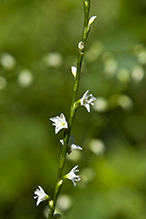 |
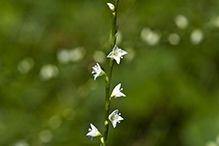 |
|
| Inflorescence |
|
|
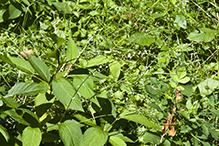 |
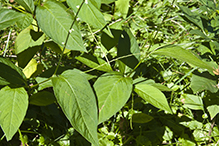 |
|
| Leaves (August) |
|
|
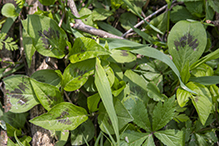 |
 |
|
| Vernal leaves (April) |
|
|
 |
||
| Vernal leaves (April) |
|

Slideshows |
|

Visitor Videos |
||
Share your video of this plant. |
||
This button not working for you? |
||
|
Other Videos |
||
Capital Naturalist: Virginia Knotweed or Jumpseed |
About
Sep 6, 2017 A native plant of shady woods and glens, Virginia Knotweed or Jumpseed is a common woodland wildflower. |

Visitor Sightings |
||
Report a sighting of this plant. |
||
This button not working for you? |
||
|
|
MinnesotaSeasons.com Sightings |
||

|
Created: Last Updated: © MinnesotaSeasons.com. All rights reserved. |
